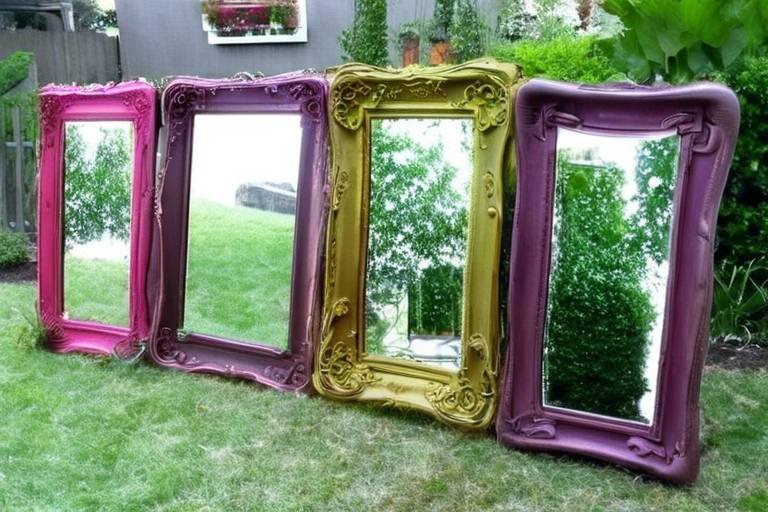DIY: Repurpose a Guitar Case into a Shelf
This article explores creative ways to transform an old guitar case into a functional and stylish shelf, perfect for displaying your favorite items while adding a unique touch to your decor. Imagine walking into your living room and seeing a beautifully repurposed guitar case, not just as a relic of your musical past, but as a stunning shelf that showcases your cherished books, plants, or collectibles. It’s like giving your old guitar case a second life, turning something that might have been collecting dust into a centerpiece of conversation and style.
Selecting the appropriate guitar case is crucial for the success of your project. You want to consider factors like size, condition, and style to ensure it fits your aesthetic and functional needs. A vintage hard case might bring a rustic charm, while a sleek modern case could add a contemporary edge to your decor. When choosing, ask yourself: Will it fit in the space I have in mind? Is it sturdy enough to hold the items I want to display? These questions will guide you in picking the perfect case.
Gathering the right tools and materials is vital for a smooth DIY process. You don’t want to be halfway through your project and realize you’re missing a crucial item. Here’s a quick rundown of what you’ll need:
- Tools: Screwdriver, drill, measuring tape, sandpaper, and paintbrush.
- Materials: Screws, brackets, paint or wood finish, and protective gear like gloves and goggles.
Having everything on hand will make your project run smoother, allowing you to focus on the fun part—creating something beautiful!
Before diving into the project, careful measurement and planning are essential. This step ensures that the shelf will fit well in your intended space and accommodate your items. Measure the wall space where you plan to mount the shelf, and consider the dimensions of the guitar case. Sketching a simple layout can help visualize how everything will come together. Think about how high you want the shelf and how far it will extend from the wall. This way, you can avoid any surprises later on.
Designing a layout for your shelf can enhance its functionality. Consider how you'll arrange items and incorporate any additional features like hooks or lighting for added utility. Picture your favorite books standing upright, or perhaps a small potted plant cascading over the edge. You can also think about adding hooks for hanging accessories or fairy lights for a cozy atmosphere. The layout design is like the blueprint of your project—take your time to get it right!
Selecting the right paint or finish can dramatically change the appearance of your guitar case shelf. Whether you want a bold color that pops or a subtle stain that highlights the wood grain, your choice will set the tone for the entire piece. Consider testing a few samples on a small area of the case to see how they look in your lighting. Remember, the finish should complement your home decor and reflect your personal style.
Proper preparation of the guitar case is key to a successful transformation. This includes cleaning, sanding, and making any necessary repairs before proceeding with the project. Start by wiping down the case to remove any dust or grime. If there are scratches or dents, sand them down to create a smooth surface. This step is crucial—think of it as giving your guitar case a fresh start, ensuring it’s ready to shine in its new role as a shelf.
Following clear assembly instructions will help you efficiently put together your guitar case shelf. Start by attaching any brackets or supports to the back of the case, ensuring they are securely fastened. Make sure the case is level before mounting it on the wall. This is where your measuring skills come into play—double-checking everything will save you from a lopsided shelf!
Mounting your new shelf securely is vital for safety and stability. Learn about the best practices for attaching your guitar case to the wall or supporting structure. Use wall anchors if you’re mounting on drywall to ensure it can hold the weight of your items. Remember, safety first—no one wants a shelf crashing down because it wasn’t mounted properly!
Adding final touches and styling your shelf can personalize your project. Discover tips for decorating your shelf to reflect your personality and enhance your living space. You might want to incorporate family photos, quirky knick-knacks, or even a small collection of your favorite vinyl records. The beauty of this project is that it’s entirely customizable—let your creativity run wild!
Q: Can any guitar case be used for this project?
A: While most guitar cases can be repurposed, it's best to choose one that is in good condition and fits your style preferences.
Q: How much weight can the shelf hold?
A: The weight capacity will depend on how securely you mount the shelf and the strength of the case itself. Always err on the side of caution and avoid overloading it.
Q: What if I want to change the color later?
A: You can always repaint or refinish the shelf! Just make sure to properly prep the surface before applying a new coat.

Choosing the Right Guitar Case
When embarking on the exciting journey of transforming an old guitar case into a stylish shelf, the very first step is . This decision can make or break your DIY project, so it’s essential to consider a few key factors that will ensure your creation is both functional and aesthetically pleasing.
First and foremost, think about the size of the guitar case. You want to select a case that fits well within the space you have in mind. Measure the area where you plan to mount your shelf to avoid any unpleasant surprises later on. A case that's too large might overwhelm your space, while one that's too small may not provide the display area you desire.
Next up is the condition of the guitar case. If you’re rummaging through thrift stores or your attic, keep an eye out for cases that are in good shape. Look for signs of wear and tear, such as cracks, broken latches, or significant scratches. A case that’s structurally sound will make your project much easier, as you won’t have to spend extra time repairing it. If you find a case that has some minor cosmetic issues, don't fret! These can often be easily fixed or incorporated into your design.
Another important factor is the style of the guitar case. The aesthetic should resonate with your personal taste and blend seamlessly with your home decor. Whether you prefer a vintage leather case, a sleek modern design, or a funky patterned one, the style will ultimately define the character of your shelf. Think about the items you plan to display and how they’ll complement the case’s appearance. A mismatched style can create visual chaos, whereas a well-coordinated look can elevate your space.
To help you visualize your options, here’s a quick table summarizing the factors to consider:
| Factor | Considerations |
|---|---|
| Size | Measure your space; ensure it fits well. |
| Condition | Look for structural integrity; minor repairs can be made. |
| Style | Choose a design that complements your decor. |
In conclusion, selecting the right guitar case is a crucial step in your DIY journey. Take your time to assess size, condition, and style, and you’ll set yourself up for a successful and enjoyable project. Remember, this isn’t just about functionality; it’s also about creating a piece that reflects your personality and enhances your living space.
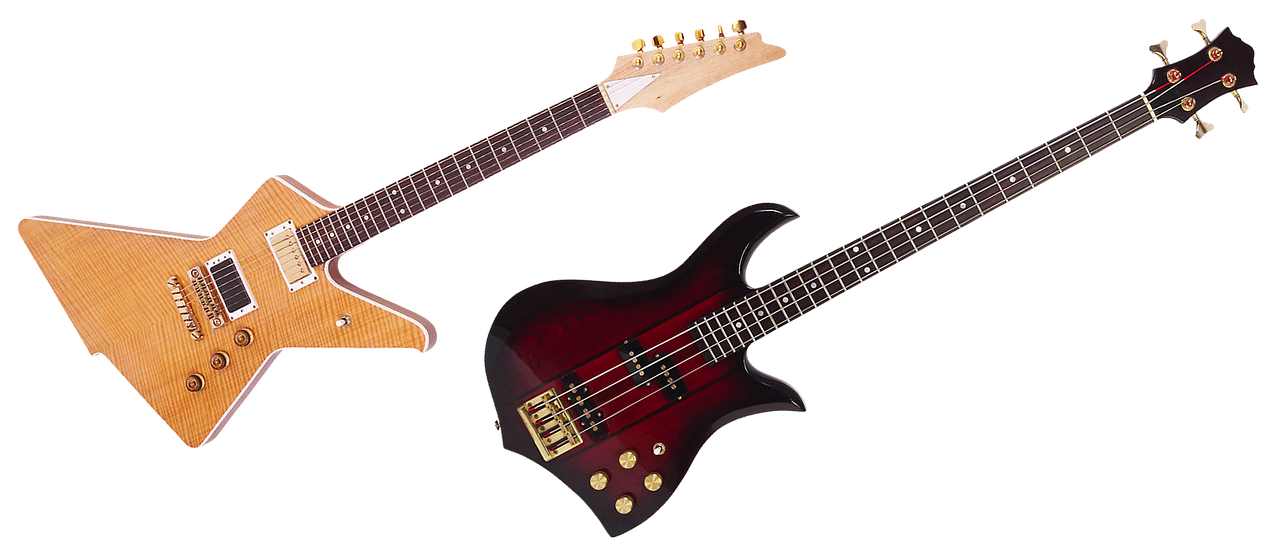
Essential Tools and Materials
Before embarking on your exciting journey of transforming an old guitar case into a stylish shelf, it's crucial to gather all the . Having everything ready at your fingertips not only saves time but also makes the process smoother and more enjoyable. Think of it as prepping for a big concert; you wouldn’t want to be without your favorite strings or picks! So, let’s dive into what you’ll need to make this DIY project a success.
First and foremost, you’ll need a sturdy guitar case. The size and condition of the case will play a significant role in the overall look and functionality of your shelf. A hard-shell case provides more durability, while a soft case can offer a unique, casual vibe. Once you've chosen your case, it’s time to gather the tools. Here’s a quick rundown:
- Drill – For making holes and securing brackets.
- Screws and Brackets – To mount the shelf securely.
- Screwdriver – For driving those screws into place.
- Sandpaper – To smooth out any rough edges or surfaces.
- Paint or Finish – To personalize your shelf and match your decor.
- Measuring Tape – To ensure everything fits perfectly.
- Level – To keep your shelf straight and even.
- Protective Gear – Safety glasses and gloves to keep you safe during the process.
In addition to these tools, don’t forget about the materials that will enhance your shelf’s aesthetic. Depending on your design, you might want to explore decorative elements like LED strip lights for a modern touch or hooks for hanging smaller items. A little creativity can go a long way in transforming a simple shelf into a stunning focal point in your room. You might also consider using adhesive felt pads to protect your wall from scratches.
Lastly, having a clear workspace is essential. A clutter-free area will help you focus on the task at hand and keep your tools organized. Imagine trying to play your favorite song on a guitar with tangled strings; it just wouldn’t work! So, set up a dedicated space where you can spread out your tools and materials, allowing for a seamless DIY experience.
With the right tools and materials in hand, you're well on your way to creating a unique shelf that not only showcases your favorite items but also tells a story. So, gather your supplies, roll up your sleeves, and let the transformation begin!
Q: Can I use any type of guitar case for this project?
A: While you can technically use any guitar case, hard-shell cases are generally more suitable due to their sturdiness and ability to hold weight better than soft cases.
Q: Do I need any special skills to complete this project?
A: No special skills are required! If you can use a drill and a screwdriver, you're all set. Just follow the instructions carefully.
Q: How do I ensure my shelf is securely mounted?
A: Always use appropriate screws and brackets for the weight of the items you plan to display. Make sure to mount into wall studs for maximum stability.
Q: Can I customize the design of the shelf?
A: Absolutely! This project is all about personalization. Feel free to paint, add lights, or incorporate hooks to suit your style.

Measuring and Planning
When it comes to transforming an old guitar case into a stylish shelf, are your best friends. Imagine diving headfirst into a project without a roadmap; it’s a recipe for chaos! To avoid this, start by determining the space where you want to place your new shelf. Grab a tape measure and jot down the dimensions of the area. This will help you visualize how the guitar case will fit into your room and ensure that it won’t overwhelm or underwhelm the space.
Next, it's essential to consider the size of the guitar case itself. Not all guitar cases are created equal! You’ll want to choose one that not only complements your decor but also provides enough space for the items you plan to display. Whether it's books, plants, or quirky collectibles, knowing the dimensions of both your case and the items you want to showcase will help you avoid any unpleasant surprises down the line.
Here are some key points to keep in mind during your measuring and planning phase:
- Height: Ensure the shelf is at a comfortable eye level. You don’t want to strain your neck to admire your collection!
- Width: Make sure there’s enough room for the guitar case without crowding other furniture.
- Depth: Consider how deep you want the shelf to be. Too deep, and it may look bulky; too shallow, and it might not hold your items securely.
After gathering your measurements, sketch out a rough design of your shelf. This doesn’t have to be a masterpiece; a simple drawing will do. Visualizing your project can help you plan for additional features like hooks for hanging items or even small lights to illuminate your display. Remember, the more detailed your plan, the smoother the execution will be!
Lastly, don’t forget to take into account any potential obstacles in your space. Are there outlets nearby for lighting? Will the shelf block any vents or radiators? These considerations can save you time and frustration as you move forward with your DIY project. With a solid plan in place, you’ll be well on your way to creating a stunning shelf that adds a unique flair to your home.

Designing Your Layout
When it comes to designing the layout of your newly repurposed guitar case shelf, it's all about creativity and functionality. Imagine your guitar case not just as a storage unit, but as a centerpiece that tells a story. Before you start placing items haphazardly, take a moment to think about what you want to display and how to arrange it for maximum impact. Will you showcase your favorite vinyl records, art pieces, or perhaps a collection of vintage cameras? The possibilities are endless!
Consider the size and shape of the items you plan to display. For instance, if you have larger items, you may want to keep them towards the center or the bottom of the shelf to create a balanced look. On the other hand, smaller decorative pieces can be placed at the top or on the sides. This not only creates visual interest but also ensures that your shelf doesn’t feel overcrowded. Remember, less is often more!
Additionally, think about incorporating some functional elements into your design. Do you have keys that always seem to go missing? Adding hooks to the side of your guitar case can provide a stylish solution. Or, if you want to create a cozy ambiance, consider integrating LED strip lights along the edges of the shelf. This can highlight your items beautifully and add a warm glow to your space.
As you sketch out your layout, it might be helpful to create a simple diagram. Use a piece of paper or a digital tool to visualize where everything will go. This can save you time and frustration later on. You might also want to consider the color palette of your items and how they will complement the finish of your guitar case. A cohesive color scheme can elevate the overall aesthetic of your shelf.
Lastly, don't forget about the spacing between your items. Allowing for some breathing room can help each piece stand out and make the shelf feel more organized. You might even want to play around with different arrangements before settling on one. After all, this is your space, and it should reflect your personal style!
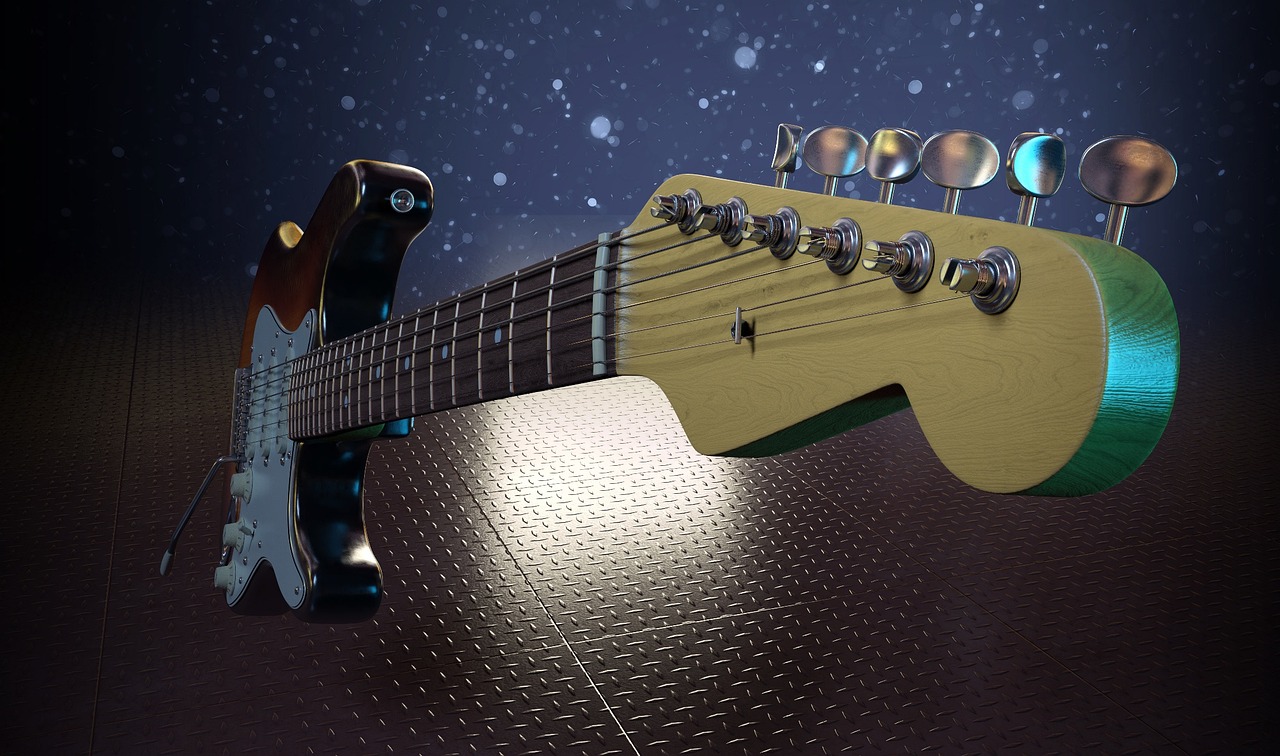
Choosing Paint or Finish
When it comes to transforming your old guitar case into a stylish shelf, the choice of paint or finish is a game changer. Think of it as the icing on the cake; without it, your creation may lack that final touch that makes it truly stand out. First, consider the overall vibe you want to achieve. Are you aiming for a rustic, vintage feel, or perhaps a sleek, modern look? Your choice will guide you in selecting the right materials.
For a vintage aesthetic, you might want to opt for chalk paint, which gives a matte finish and allows for easy distressing. This technique can create a charming, worn look that tells a story. On the other hand, if you’re leaning towards a modern design, a glossy spray paint or a high-quality enamel might be the way to go. These finishes reflect light beautifully and can make your shelf pop against the wall.
Additionally, consider the color palette of your existing decor. You can either choose a color that complements your room or go for a bold contrast that makes your shelf a statement piece. If you're unsure, testing a few samples on the guitar case can help you visualize the final outcome before committing to a full coat.
Another important factor is durability. If your shelf will hold items that you frequently access, or if it will be in a high-traffic area, selecting a durable finish is essential. A protective topcoat, such as polyurethane, can add an extra layer of resilience, ensuring your shelf withstands daily wear and tear while maintaining its beauty.
Lastly, don’t forget about the environmental impact of your choices. Look for low-VOC or eco-friendly paints to minimize harmful emissions. This is especially important if you’re working in a closed space. The right paint or finish not only enhances your shelf’s appearance but also contributes to a healthier home environment.
In summary, choosing the right paint or finish for your guitar case shelf involves considering your desired aesthetic, color compatibility, durability, and environmental impact. With a little thought and creativity, you can elevate your DIY project and create a stunning focal point in your home.

Preparing the Guitar Case
Before you dive headfirst into the exciting world of DIY, it's essential to prepare your guitar case properly. Think of this step as laying the groundwork for a beautiful masterpiece; without a solid foundation, even the most stunning designs can crumble. Start by giving your guitar case a thorough inspection. Look for any signs of wear and tear, such as scratches, dents, or broken latches. If your case has seen better days, don't fret! With a little elbow grease, you can restore it to its former glory.
Once you've assessed the condition, it's time to clean your guitar case. Use a damp cloth to wipe away any dust or grime that has accumulated over the years. If there are stubborn stains, a gentle cleaner can work wonders. Just make sure to avoid anything too harsh that could damage the material. After cleaning, allow the case to dry completely before moving on to the next step.
Next up is sanding. This might sound intimidating, but it's a straightforward process that can significantly improve the finish of your shelf. Grab some fine-grit sandpaper and gently sand the exterior of the case, focusing on any rough spots or areas that need a little love. Sanding not only smooths out imperfections but also helps the paint adhere better later on. Once you've finished sanding, wipe down the case again to remove any dust particles.
If your guitar case has any broken components, such as hinges or latches, this is the perfect time to make those repairs. A well-maintained case will not only look better but will also function more effectively as a shelf. Consider replacing any worn-out parts with sturdy hardware to ensure your shelf can hold all your cherished items without a hitch.
Finally, before you start painting or finishing your guitar case, it's crucial to protect the interior. If your case has a plush lining, you might want to cover it with painter's tape to prevent any accidental spills or drips from ruining it. This extra step will save you from potential headaches down the line.
In summary, preparing your guitar case is a vital step in the DIY process. By cleaning, sanding, repairing, and protecting your case, you set the stage for a successful transformation. Remember, a little preparation goes a long way in ensuring that your new shelf not only looks fantastic but also stands the test of time.
- What type of guitar case is best for repurposing? Look for a hard-shell case that is sturdy and in good condition. Vintage cases can add character, while modern ones may offer better durability.
- Can I use any paint on the guitar case? It's recommended to use acrylic or spray paint designed for plastic or wood, depending on the material of your case.
- How do I ensure my shelf is secure? Always mount your shelf to wall studs or use heavy-duty wall anchors to ensure stability.
- What items can I display on my guitar case shelf? You can showcase books, plants, decorative items, or even your favorite music memorabilia!
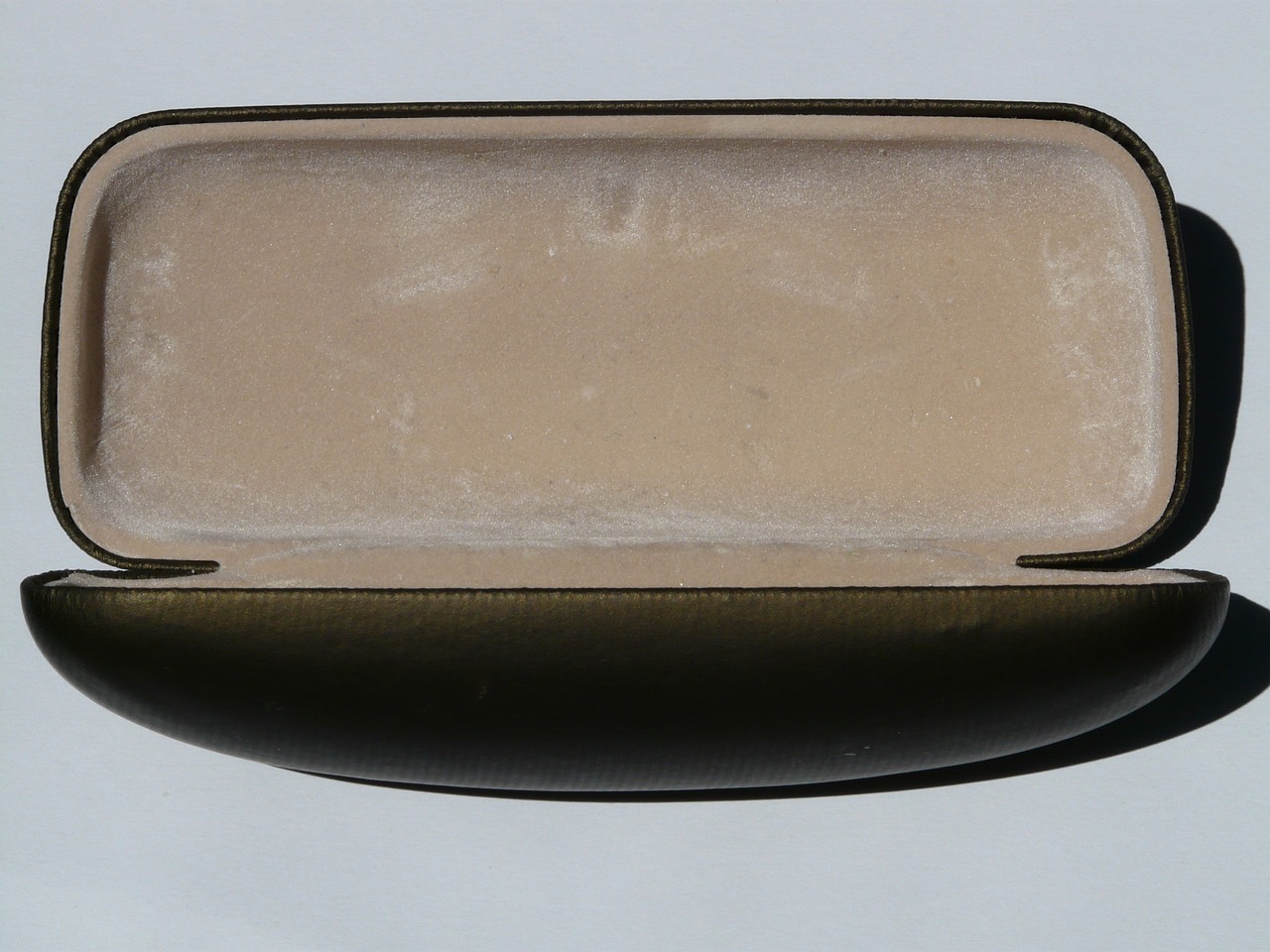
Assembly Instructions
Now that you have your materials ready and your guitar case prepped, it’s time to dive into the assembly process. This is where your vision starts to take shape, and it can be incredibly satisfying to see your hard work come together. The first step is to lay out all your materials in a well-lit space, ensuring that everything is within reach. This will streamline your workflow and keep you organized as you go through the assembly. Think of it like preparing for a concert; you wouldn’t want to be scrambling for your picks right before you hit the stage!
Begin by flipping your guitar case upside down. This will be the base of your shelf. If your case has any hardware, such as latches or handles, make sure they are positioned in a way that won’t interfere with the shelf’s functionality. You might want to remove any unnecessary hardware now, so you have a clean slate to work with.
Next, you’ll want to attach the brackets that will hold the shelf in place. Use a measuring tape to find the center of the guitar case and mark it with a pencil. This will be your anchor point. Depending on the size of your case, you may need two or more brackets for stability. Make sure to use a level to ensure that your brackets are even. Nobody wants a crooked shelf, right? Secure the brackets with screws, using a power drill for efficiency. Remember to wear protective eyewear during this step to keep your eyes safe from any debris.
Once the brackets are securely attached, it’s time to add the shelf itself. Cut a piece of wood or sturdy material to fit snugly within the case. This piece will serve as the actual shelf where you’ll display your items. It’s important to measure twice and cut once to avoid any mishaps. Once you have your shelf cut to size, place it on the brackets and secure it with screws. This will ensure it can hold the weight of your collectibles, books, or whatever treasures you plan to showcase.
After securing the shelf, it’s time to think about how you’ll mount your guitar case to the wall. Using a stud finder, locate the studs in the wall where you want to hang the shelf. This is crucial for ensuring that your shelf is stable and can support the weight of your items. Mark the stud locations with a pencil, and align your guitar case accordingly. Use wall anchors if you can’t find studs, as they provide extra support. Drill holes in the wall, insert the anchors, and then mount your guitar case using screws. Again, a level is your best friend here to ensure everything is straight.
Finally, take a step back and admire your work! Before you start decorating, let’s make sure everything is secure. Give the shelf a gentle shake to test its stability. If it feels solid, you’re ready to add your personal touch. Remember, the assembly process is just as important as the final look, so take your time and enjoy the journey!
- Can I use any guitar case for this project? Yes, but consider the size and condition of the case. A hard case will provide more stability than a soft case.
- What type of wood should I use for the shelf? Plywood or MDF (Medium-Density Fiberboard) are great options as they are sturdy and easy to work with.
- How much weight can the shelf hold? This depends on the strength of the brackets and how well it’s mounted. Always err on the side of caution and avoid overloading it.
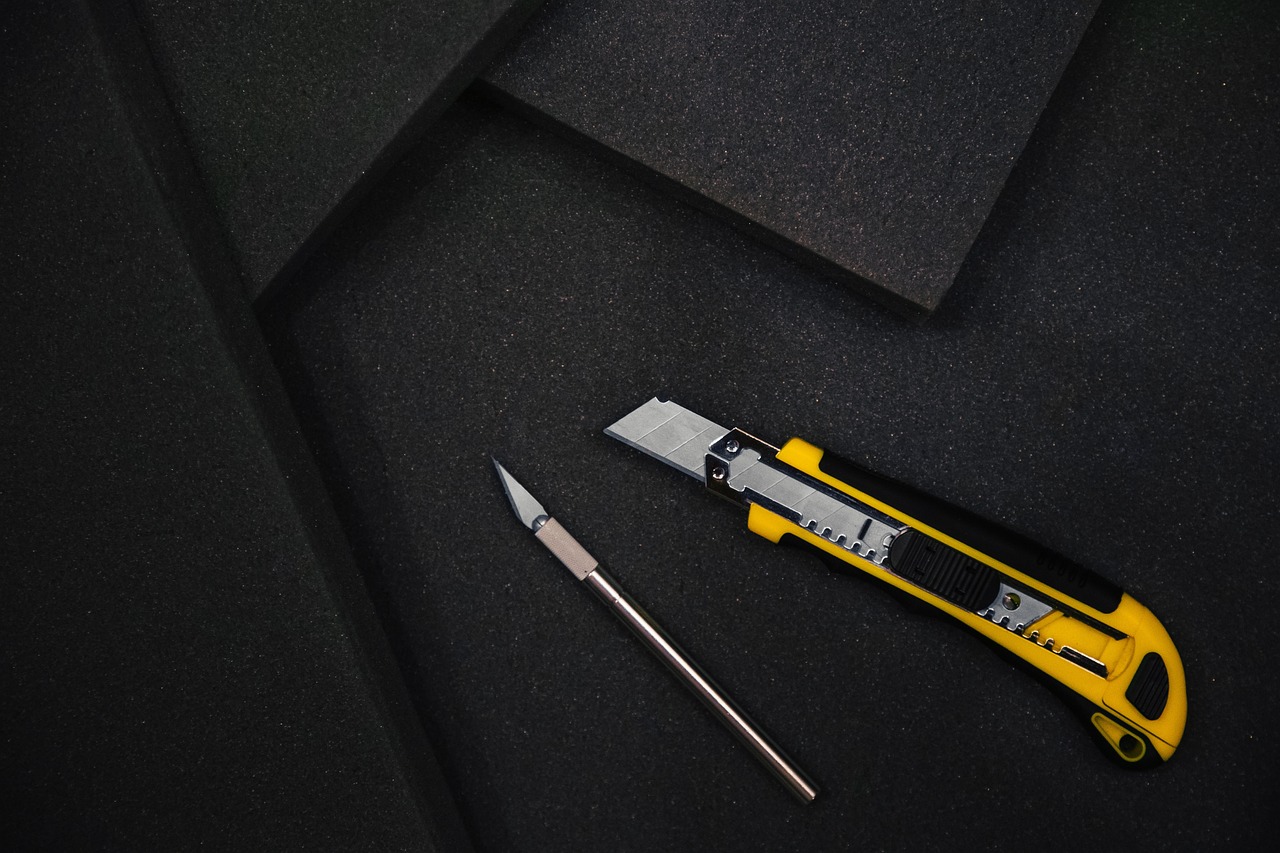
Mounting the Shelf
Once you’ve crafted your stunning guitar case shelf, the next step is to securely mount it. This process is crucial because, let’s be honest, no one wants their beloved items crashing to the floor! First, you need to determine the best location for your shelf. Look for a wall that can support the weight of the shelf and its contents. Ideally, you should choose a spot that enhances both the functionality and the aesthetics of your space. Think about areas like living rooms, bedrooms, or even your creative workspace where you want to add a unique flair.
Next, let’s talk about the tools you’ll need to get this job done right. You’ll want to gather a few essential items:
- Stud finder: This tool will help you locate the wooden beams behind your drywall, ensuring a sturdy mount.
- Drill: A reliable drill is necessary for making holes in the wall and securing your shelf.
- Screws and wall anchors: These are vital for holding your shelf in place, especially if you’re mounting it on drywall.
- Level: To ensure that your shelf is perfectly straight, a level is a must-have.
Now, let’s get into the nitty-gritty of the mounting process. Here’s a simple step-by-step guide:
- Find the studs: Use your stud finder to locate the studs in the wall. Mark these spots lightly with a pencil.
- Measure and mark: Measure the height at which you want to mount your shelf. Make sure to mark this on the wall.
- Drill pilot holes: At the marked points, drill pilot holes into the studs. If you’re using wall anchors, drill holes according to the anchor size.
- Attach brackets: Secure the brackets to the wall using screws. Make sure they’re tight and stable.
- Hang the shelf: Finally, place your guitar case shelf onto the mounted brackets. Use a level to ensure it’s straight before securing it fully.
And there you have it! With your shelf securely mounted, you can now decorate it with your favorite items, whether it’s books, plants, or cherished memorabilia. Just remember to periodically check the stability of the shelf, especially if you tend to change up your decor frequently. A little maintenance goes a long way in keeping your unique creation safe and sound.
Q: How much weight can my guitar case shelf hold?
A: The weight capacity largely depends on the type of wall anchors and screws you use, as well as the strength of the wall studs. On average, a well-mounted shelf can hold anywhere from 20 to 50 pounds.
Q: Can I use a guitar case that’s not in perfect condition?
A: Absolutely! An old or worn guitar case can add character to your shelf. Just make sure to repair any significant damage before mounting it.
Q: What if I don’t want to drill into my walls?
A: If you prefer not to drill, consider using heavy-duty adhesive strips or brackets that can hold the shelf without wall damage. However, ensure they are rated for the weight you plan to place on the shelf.
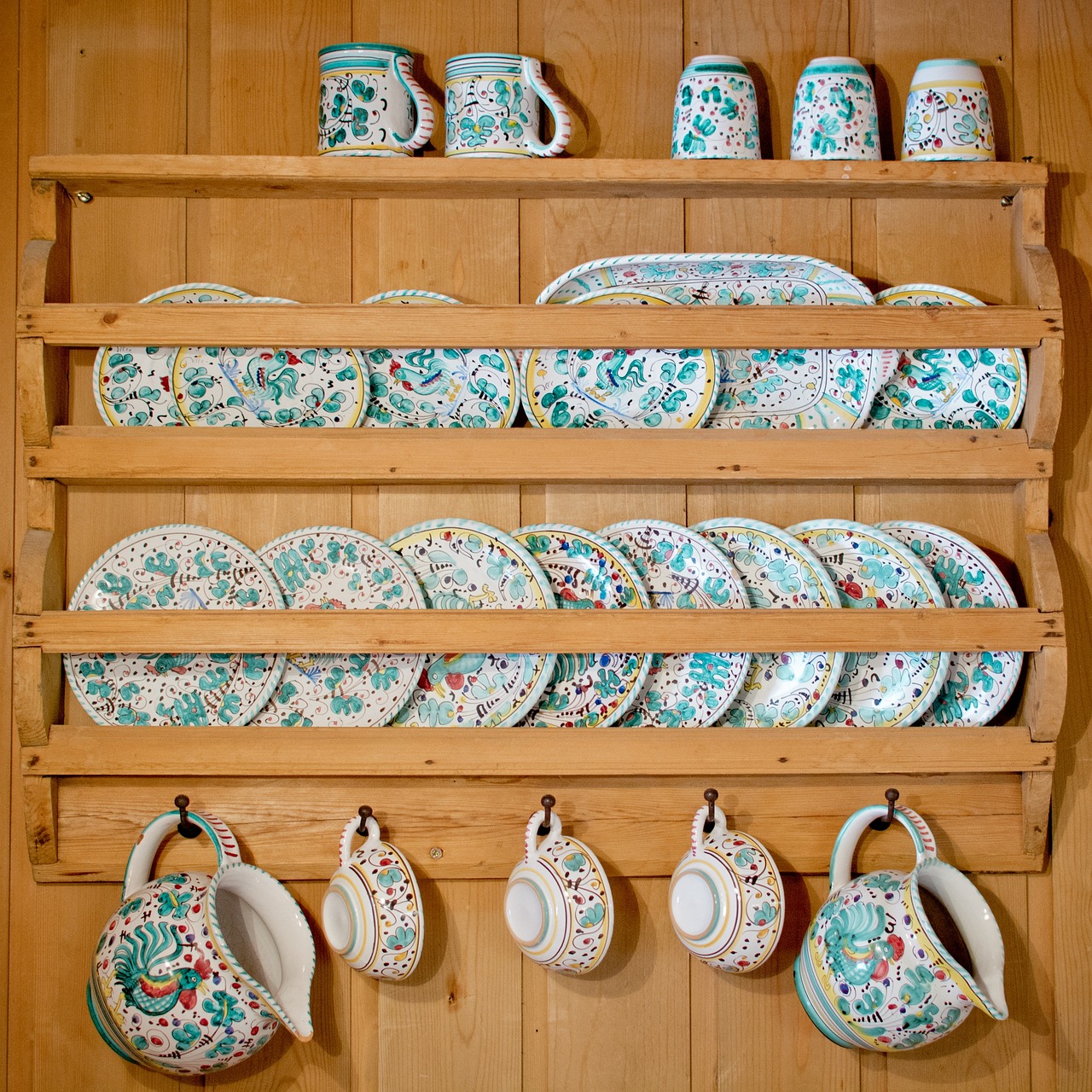
Final Touches and Styling
Once you've successfully assembled your guitar case shelf, it's time to give it that personal flair that truly makes it yours! Think of this stage as the icing on the cake; it’s where your creativity can really shine. Start by considering the items you want to display. Are you a book lover? Maybe a few of your favorite novels would look stunning on the shelf. Or perhaps you have a collection of quirky knick-knacks that deserve a spotlight. The key is to create a visual harmony that reflects your personality.
When it comes to styling, think about the color palette of your room. If your decor leans towards a minimalist aesthetic, you might want to stick with neutral tones for your items. On the other hand, if you love vibrant colors, don’t hesitate to make a statement with bold pieces. You can even incorporate some greenery by adding small potted plants or succulents, which can bring a refreshing touch to your shelf. Just imagine how a pop of green can breathe life into your space!
Another fun aspect of styling is the arrangement of items. Consider using the rule of thirds when placing your items on the shelf. This design principle suggests that you should divide your shelf into three equal parts and place items in a way that creates balance. For instance, you could group items in odd numbers—like three or five—to create a more visually appealing display. Remember, it’s all about creating a sense of balance and interest.
Don’t forget about lighting! If your shelf is located in a dim area, consider adding some LED strip lights or a small lamp to highlight your favorite pieces. This can create a cozy ambiance and draw attention to your unique display. Additionally, mirrors can work wonders; placing a small mirror behind your shelf can reflect light and make your space feel larger and more open.
Lastly, consider adding some personal touches like framed photos or artwork. This not only enhances the aesthetic but also tells a story about who you are. Remember, your shelf is not just a place for items; it's a representation of your journey and interests. So, take your time and enjoy the process of styling your guitar case shelf. It’s all about making it a reflection of you!
Q: Can I use any type of guitar case for this project?
A: While you can use various types of guitar cases, it's best to choose one that is sturdy and in good condition to ensure it can support the items you want to display.
Q: How do I securely mount the guitar case shelf?
A: Use heavy-duty wall brackets and screws to mount the guitar case to the wall. Make sure to locate wall studs for added stability.
Q: What types of items are best for displaying on my shelf?
A: You can display a variety of items such as books, plants, decorative objects, or personal memorabilia. Just make sure they fit your style and the shelf's weight capacity.
Q: Can I paint the guitar case before using it as a shelf?
A: Absolutely! Painting the guitar case can enhance its look and allow it to better match your decor. Just ensure the paint is suitable for the material of the case.
Q: How can I ensure my shelf is safe for heavier items?
A: If you plan to display heavier items, make sure to reinforce the shelf with additional support brackets and ensure it is securely mounted to the wall.
Frequently Asked Questions
- What type of guitar case is best for repurposing into a shelf?
When choosing a guitar case, look for one that is sturdy and in good condition. Hard cases are generally better than soft cases as they provide more support. Also, consider the size and style that will best fit your decor. Vintage cases can add a unique touch, while modern cases might offer a sleeker look.
- Do I need special tools for this project?
Not necessarily! Most DIY enthusiasts will have the essential tools at home, such as a screwdriver, drill, and measuring tape. However, having a few additional items like brackets for mounting and sandpaper for smoothing surfaces can make your project easier and more successful.
- How should I prepare the guitar case before starting my shelf project?
Preparation is key! Start by cleaning the case thoroughly to remove any dust or debris. If there are any scratches or dents, sanding the surface can help smooth it out. Make sure to check for any structural issues, and repair them as needed to ensure your shelf is safe and sturdy.
- Can I customize the design of my guitar case shelf?
Absolutely! This is one of the best parts of the project. You can paint or stain the case to match your home decor, and you can add hooks for hanging items or even small lights for ambiance. Personalizing your shelf makes it not just functional but also a unique piece of art in your space.
- How do I securely mount the shelf to the wall?
For safety, it’s crucial to use the right mounting hardware. Make sure to locate the wall studs for a secure attachment, and use heavy-duty brackets to support the weight of the shelf and its contents. Follow the instructions carefully to ensure everything is stable and safe.
- What items can I display on my new shelf?
The possibilities are endless! You can showcase your favorite books, decorative items, plants, or even musical memorabilia. Just ensure that the items are not too heavy, as this could compromise the shelf's stability.
- Is this project suitable for beginners?
Definitely! This DIY project is beginner-friendly. With some basic tools and a bit of patience, anyone can transform an old guitar case into a stylish shelf. Just take your time, follow the steps, and don’t hesitate to ask for help if you need it!















